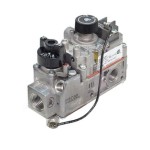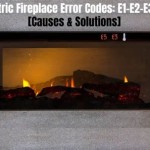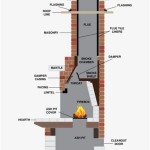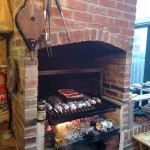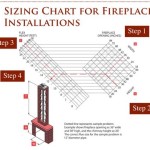Fireplace Insert Options: A Comprehensive Guide
Fireplace inserts offer a practical and efficient solution for updating existing masonry or prefabricated fireplaces. They transform traditionally inefficient, open-hearth fireplaces into effective heating appliances. These inserts function as enclosed units that fit directly into the opening of an existing fireplace, providing significantly improved heating efficiency and control compared to a standard fireplace.
Choosing the right fireplace insert depends on a variety of factors, including heating needs, aesthetic preferences, budget constraints, and existing fireplace dimensions. A proper understanding of the different types of inserts available, their advantages, and disadvantages is crucial for making an informed decision. This article provides a comprehensive overview of fireplace insert options, covering fuel types, key features, installation considerations, and maintenance requirements.
Fuel Types: A Comparative Analysis
Fireplace inserts are primarily classified by their fuel type. The most common options include wood, gas, and electric, each offering distinct characteristics in terms of heating capacity, cost of operation, environmental impact, and convenience.
Wood Inserts: Wood-burning inserts are a popular choice for homeowners seeking a traditional fireplace experience. They are designed to burn wood more efficiently than open fireplaces, often achieving efficiency ratings of 70% or higher. This is achieved through features like airtight combustion chambers, controlled air intake, and catalytic or non-catalytic combustors. Catalytic combustors reduce emissions and enhance efficiency by burning off smoke particles, while non-catalytic combustors rely on a carefully designed firebox to achieve complete combustion.
Wood inserts offer a significant heating capacity, capable of warming large areas. However, they require manual labor to load wood, maintain the fire, and clean the ash. Furthermore, wood-burning inserts produce particulate emissions, which, although regulated, are still a factor to consider. The cost of wood can also fluctuate depending on local availability and demand.
Considerations for wood inserts include the need for proper wood storage to ensure dryness, regular chimney sweeping to prevent creosote buildup, and adherence to local regulations regarding wood burning. The installation of a wood insert typically requires a stainless steel liner that runs the length of the chimney to properly vent exhaust gases.
Gas Inserts: Gas fireplace inserts offer convenience and ease of use. They are available in two primary types: natural gas and propane. Natural gas is generally less expensive than propane, provided a natural gas line is already available to the property. Propane inserts require a propane tank, which must be refilled periodically.
Gas inserts operate with the push of a button or the flip of a switch, providing instant heat and precise temperature control. They feature realistic-looking flames and ember beds, often indistinguishable from a traditional wood-burning fire. Gas inserts are available in a range of styles to complement various home decors, from traditional to contemporary.
The efficiency of gas inserts varies depending on the model, but many achieve efficiency ratings of 70% or higher. They produce significantly less particulate emissions compared to wood-burning inserts, making them a more environmentally friendly option. Maintenance requirements are relatively low, typically involving an annual inspection and cleaning by a qualified technician.
Installation of a gas insert requires a gas line connection and proper venting. Depending on the model, venting options include direct vent, B-vent, and vent-free. Direct vent inserts draw combustion air from outside and exhaust gases directly outside, providing optimal safety and efficiency. B-vent inserts utilize an existing chimney, while vent-free inserts do not require venting, although they are subject to specific regulations and may not be suitable for all homes due to concerns about indoor air quality.
Electric Inserts: Electric fireplace inserts offer the ultimate convenience and ease of installation. They require no venting or fuel lines, simply plugging into a standard electrical outlet. Electric inserts produce heat using an electric resistance coil, similar to a space heater. They are often equipped with realistic flame effects, which can be operated independently of the heating function, allowing for ambiance without the need for heat.
Electric inserts are the least expensive type of fireplace insert to purchase and install. However, they typically have the lowest heating capacity compared to wood and gas inserts. Electric inserts are best suited for supplemental heating in smaller areas. Their operating cost depends on electricity rates, which can vary significantly depending on location.
Maintenance for electric inserts is minimal, typically involving occasional cleaning of the flame effect screen. They are considered the safest option, as they do not produce any combustion byproducts. Electric inserts are a good choice for apartments, condominiums, or homes where venting is not possible or desired.
Key Features and Considerations
Beyond fuel type, several key features and considerations should be taken into account when selecting a fireplace insert. These factors can significantly impact the performance, convenience, and overall satisfaction with the insert.
Heating Capacity: The heating capacity of a fireplace insert is measured in British Thermal Units per hour (BTUs). The appropriate BTU rating depends on the size of the area to be heated, the climate, and the insulation levels of the home. It's essential to select an insert with sufficient BTU output to effectively heat the desired space without overworking the unit. Consult with a heating professional to determine the appropriate BTU rating for specific needs.
Efficiency Rating: The efficiency rating indicates the percentage of fuel consumed that is converted into usable heat. A higher efficiency rating translates to lower fuel consumption and reduced heating costs. Wood and gas inserts are typically rated using a percentage, while electric inserts are rated based on their power consumption in watts. Look for inserts with high-efficiency ratings to maximize energy savings and minimize environmental impact.
Venting Options: As mentioned earlier, venting options vary depending on the fuel type and the specific model of the insert. Direct vent inserts are generally considered the safest and most efficient option for gas inserts. B-vent inserts require an existing chimney, while vent-free inserts have specific limitations and regulations. Wood inserts always require a properly sized stainless steel chimney liner. Ensure that the chosen insert is compatible with the existing venting system or budget for the necessary modifications.
Aesthetic Design: Fireplace inserts are available in a wide range of styles and finishes to complement various home decors. Options include traditional, contemporary, and transitional designs, with various finishes such as black, brushed nickel, and porcelain enamel. Consider the overall aesthetic of the room and choose an insert that seamlessly integrates with the existing decor.
Remote Control: Many gas and electric inserts come equipped with remote controls, allowing for convenient operation from a distance. Remote controls can be used to adjust the flame height, temperature, and fan speed. Some models also offer programmable thermostats for automated temperature control.
Safety Features: Safety is a paramount concern when selecting a fireplace insert. Look for inserts that are certified by a reputable testing agency, such as UL or CSA. These certifications ensure that the insert meets stringent safety standards. Consider features such as child safety locks, overheat protection, and carbon monoxide detectors.
Warranty: A comprehensive warranty provides peace of mind and protects against potential defects or malfunctions. Review the warranty terms and conditions carefully, paying attention to the duration of coverage and the specific components covered. Choose an insert from a reputable manufacturer that offers a solid warranty.
Installation and Maintenance
Proper installation and regular maintenance are crucial for ensuring the safe and efficient operation of a fireplace insert. Incorrect installation can lead to safety hazards, reduced efficiency, and premature wear and tear. Neglecting maintenance can result in performance issues, costly repairs, and even dangerous situations.
Professional Installation: It is highly recommended to hire a qualified professional to install a fireplace insert. Professional installers have the knowledge, experience, and tools necessary to ensure that the insert is installed correctly and safely. They can also address any potential issues or challenges that may arise during the installation process.
Chimney Inspection: Before installing a fireplace insert, it is essential to have the chimney inspected by a qualified chimney sweep. The inspection will identify any existing problems, such as cracks, blockages, or creosote buildup, that need to be addressed before the insert can be installed. A clean and properly functioning chimney is essential for safe and efficient venting.
Chimney Liner Installation: As previously mentioned, wood inserts require a stainless steel chimney liner to properly vent exhaust gases. The liner must be sized correctly to match the insert and installed according to local building codes. Gas inserts may also require a liner, depending on the model and venting requirements.
Regular Cleaning: Regular cleaning is essential for maintaining the efficiency and appearance of a fireplace insert. Wood inserts should be cleaned regularly to remove ash and creosote buildup. Gas and electric inserts should be cleaned to remove dust and debris from the flame effect screen and other components.
Annual Inspection: An annual inspection by a qualified technician is recommended for all types of fireplace inserts. The technician will inspect the insert for any signs of damage or wear and tear, clean the components, and ensure that the venting system is functioning properly. Regular inspections can help prevent potential problems and extend the lifespan of the insert.
Fuel Storage: Proper fuel storage is important for wood and propane inserts. Wood should be stored in a dry, well-ventilated area to prevent rot and mold growth. Propane tanks should be stored in a safe location, away from potential ignition sources.
By carefully considering the fuel type, key features, installation requirements, and maintenance needs, homeowners can select and maintain a fireplace insert that provides efficient heating, enhanced ambiance, and long-lasting enjoyment.

What Are The Types Of Fireplace Inserts Dc Service

A Step By Guide To Understanding Fireplace Inserts

What S Best A Fireplace Stove Or Insert We Love Fire

Fireplace Insert Guide Fireplaces Direct Learning Center

Fireplace Insert Guide Fireplaces Direct Learning Center

How To Buy A Gas Fireplace Insert Buyer S Guide From Regency

Fireplace Inserts 5 Money Saving Benefits Efficient Heating

Enviro S Gas Q1 Insert

Improve Your Home S Ambiance With A Gas Fireplace Or Firepit

What Is A Fireplace Insert How Does It Work Croft

